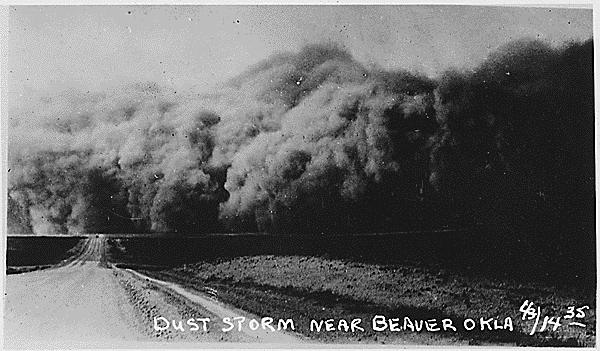
The 80th Anniversary of Black Sunday was observed April 14 in Oklahoma City when more than 30 survivors of the huge dust storm that swept across Oklahoma and propelled dust all the way to the East Coast gathered to remember that day, reports Ron Hays (Radio Oklahoma Network, Oklahoma City, OK). “That whole decade was known as the Dirty Thirties, but the Black Sunday event was the proverbial ‘shot heard around the world’ when it came to the Dust Bowl and the desperate need for conservation to counter the massive clouds of dust that enveloped the region. The Oklahoma Conservation Commission, along with the Oklahoma Association of Conservation Districts and the USDA's Natural Resources Conservation Service sponsored a panel of those who lived through memorable day to allow them to tell their story. Ron was there to cover the event and said, “Much of our modern Conservation movement, especially here in Oklahoma, has its roots in the hard times of that era.” It's said that a radio reporter gave the name Black Sunday to what proved to be the single worst dust storm to blow through the southern plains in the 1930s. One of the survivors was Pauline Hodges, who Ron interviewed for his coverage.
As a little girl living in the Panhandle, she remembers April 14, 1935, as a different kind of day. She was almost six years old, and she recalls there were dust storms every day, but none like that "black cloud" that came in that Sunday. "You couldn't see anything," Hodges said. "It was the only day that I remember it was ever that bad." She said her father was convinced the dust storms were caused by plowing of the land. Two months after Black Sunday, Hodges said her family lost everything to bank foreclosure. They lost their farm, their house, all of the machinery and they had to move. "It changed us forever though, in what we did, how we felt and how we had to live and our attitudes," Hodges said. "It probably made better people out of us, but we didn't think that at the time." Oklahoma State Conservationist Gary O'Neill said the Dust Bowl was attributed to the dry weather and to the poor soil conservation techniques used at the time. The region had seen 15 - 20 years of prolonged drought, a lot of ground was broken out of prairie grassland into farm land without proper conservation practices. Growing wheat in one of worst droughts this country had ever seen, he said, didn’t provide adequate ground cover, and the bare soil was exposed to high winds and dry conditions, which lead to massive dust erosion. Now, 80 years later, Oklahoma continues to deal with severe drought, but the state has not seen the massive dust storms like the 1930s. O’Neill attributes that to farmers learning new techniques of farming, new equipment and the adoption of new technology. Jason Weller, current Chief of USDA’s Natural Resources Conservation Service, called attention to the anniversary of the establishment of the Soil Conservation Service (SCS) as April 27 (the day before when NAFB visited USDA during Washington Watch.) Ron said, “Weller noted the 80th anniversary of Black Sunday was the tipping point in the push to have the service established. Weller agreed with historians that the SCS (now NRCS) came about because of the graphic lesson that Black Sunday taught. Dirt was even seen in Washington from that storm.”
